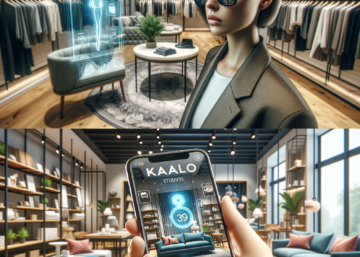Virtual reality has gotten a lot of attention in the gaming industry, and now with Facebook rebranding as Meta, people anticipate even more applications for VR. But augmented reality, the tech that transforms data into images and overlays it onto our real world, is going to beat it to the punch. In fact, it’s already here.
“By superimposing digital information directly on real objects or environments, AR allows people to process the physical and digital simultaneously, eliminating the need to mentally bridge the two. That improves our ability to rapidly and accurately absorb information, make decisions, and execute required tasks quickly and efficiently.”
– Michael Porter, Harvard Business Review, 2019
Who’s Using AR Now and For What?
Augmented reality has all sorts of applications for driving directions, shopping, healthcare and instructions for how to replace your laptop’s battery. Industry giants like Amazon, Facebook, General Electric, Mayo Clinic and the U.S. Navy are already using AR for a major boost in quality and productivity. For a visual, imagine the animal faces of Snapchat superimposed onto real faces or Pokemon Go characters overlaid onto the real streets. Now instead, think of furniture overlaid onto a room, so you can see how it looks in your home before ordering it. Imagine information like heart rate and other vital signs projected right onto a patient during surgery.
Do You Need Smart Glasses to Use AR?
When researching the possibilities for AR tech, we often find it relies on the development of smart glasses so that consumers, employees, doctors can view information projected onto the world around them, but augmented reality doesn’t have to wait for smart glasses tech to catch up and become more affordable. AR is available right now to anyone who has a smartphone. With various apps, you can view your environment through the phone screen and see what a potential bedroom suite would look like in your space. You can do the same with walking navigation. In a large warehouse or airport, you can view real-time instructions through your phone on the walkway in front of you.
Over the next few years, the experience of augmented reality will be even more seamless through head-mounted interfaces and smart glasses. “Increasingly,” writes Michael Porter, “the constraint is not a lack of data and knowledge but how to assimilate and act on them — in other words, the interface with humans. AR is emerging as a leading solution to this challenge.”
More on Augmented Reality
How Augmented Reality Will Change Shopping



